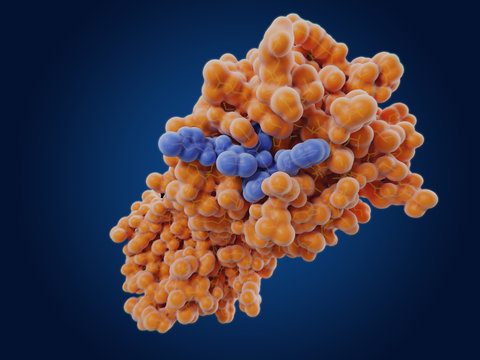Enzyme technology is a branch of biotechnology that involves the use of enzymes in various industrial and scientific applications. Enzymes are proteins that act as catalysts, accelerating chemical reactions in living organisms. Enzymes can also be extracted and used in commercial and industrial processes to increase the efficiency of chemical reactions.
Enzyme technology has many applications in different fields, including food production, medicine, environmental protection, and biofuel production. In the food industry, enzymes are used to improve the quality and texture of food, increase yield, and reduce the time and cost of production. For example, enzymes are used to produce cheese, bread, beer, and fruit juice.
In medicine, enzymes are used to develop new drugs and therapies, diagnose diseases, and treat various medical conditions. For example, enzymes are used in the production of insulin for the treatment of diabetes and in the development of enzyme replacement therapies for genetic disorders.
Enzyme technology is also used in environmental protection to remove pollutants from the environment. For example, enzymes are used to break down waste in sewage treatment plants and to clean up oil spills.
Enzyme technology is constantly evolving and new enzymes are being discovered and engineered for various applications. The use of enzymes in industry and science has many advantages over traditional chemical processes, including higher efficiency, lower energy consumption, and fewer harmful byproducts.

Classification of enzymes
Enzymes can be classified in various ways based on their structure, function, and mode of action. Here are some of the common ways to classify enzymes:
- Based on their catalytic activity: Enzymes can be classified based on the type of reaction they catalyze, such as hydrolysis, oxidation-reduction, transferase, isomerase, and ligase enzymes.
- Based on their substrates: Enzymes can be classified based on the type of substrate they act upon, such as carbohydrases, proteases, and lipases.
- Based on their mechanism of action: Enzymes can be classified based on the mechanism by which they catalyze reactions, such as active-site, allosteric, and covalent catalysis.
- Based on their structure: Enzymes can be classified based on their structural characteristics, such as whether they are composed of proteins or RNA, or whether they are globular or fibrous in shape.
- Based on their specificity: Enzymes can be classified based on their specificity for particular substrates or groups of substrates, such as narrow-specificity enzymes that act on only one type of substrate or broad-specificity enzymes that act on multiple substrates.
- Based on their regulatory properties: Enzymes can be classified based on their regulation, such as whether they are activated or inhibited by other molecules, or whether their expression is regulated by hormones or other signaling molecules.
- Based on their location: Enzymes can be classified based on their cellular location, such as whether they are found in the cytoplasm, mitochondria, or lysosomes.
Enzyme production technology
Enzyme production technology involves the use of various methods and techniques to produce enzymes on a large scale for industrial and commercial applications. Here are some of the common methods used for enzyme production:
- Microbial fermentation: This method involves the use of microorganisms such as bacteria, fungi, and yeast to produce enzymes. The microorganisms are cultured in a nutrient-rich medium under controlled conditions, and the enzymes are harvested from the culture broth or the microbial biomass.
- Plant and animal tissue culture: This method involves the use of plant or animal cells to produce enzymes. The cells are cultured in a nutrient-rich medium under controlled conditions, and the enzymes are harvested from the cell culture medium or the cellular biomass.
- Genetic engineering: This method involves the modification of the genetic material of microorganisms, plants, or animals to produce enzymes with desired properties. The modified organisms are cultured or grown under controlled conditions, and the enzymes are harvested from the culture broth or the biomass.
- Extraction from natural sources: Some enzymes are naturally occurring and can be extracted from animal or plant tissues, such as pancreatic enzymes from animals or papain from papaya.
- Immobilization: This method involves the immobilization of enzymes on a solid support, such as a resin or a membrane. The immobilized enzymes can be used repeatedly, and the production process can be simplified and cost-effective.
- Recombinant DNA technology: This method involves the cloning of DNA fragments encoding the desired enzymes into expression vectors, which are then transformed into host cells for expression of the recombinant enzymes. This approach allows for the production of large quantities of highly purified enzymes.
Enzyme production technology is constantly evolving, and new methods and techniques are being developed to improve the efficiency, yield, and quality of enzyme production.
Applications of enzyme technology
Enzyme technology has a wide range of applications in various industries, including food and beverage, pharmaceuticals, agriculture, biofuels, and environmental management. Here are some of the common applications of enzyme technology:
- Food and beverage industry: Enzymes are used in the food and beverage industry to enhance the quality, flavor, texture, and nutritional value of products. For example, enzymes are used in the production of cheese, bread, beer, and fruit juice to improve the yield, shelf-life, and sensory properties of the final product.
- Pharmaceutical industry: Enzymes are used in the pharmaceutical industry to produce drugs, vaccines, and diagnostics. Enzymes are used as catalysts in the synthesis of drugs and as tools in the study of disease mechanisms.
- Agriculture: Enzymes are used in agriculture to improve crop yields, soil quality, and animal feed. For example, enzymes are used in animal feed to improve digestion and nutrient absorption, and in soil management to enhance microbial activity and nutrient cycling.
- Biofuels: Enzymes are used in the production of biofuels such as ethanol and biodiesel. Enzymes are used to break down plant materials into simple sugars, which are then fermented into biofuels.
- Environmental management: Enzymes are used in environmental management to treat wastewater, biodegrade organic pollutants, and reduce the environmental impact of industrial processes. For example, enzymes are used in the paper industry to reduce the amount of chlorine required in the bleaching process, and in the textile industry to remove excess dyes and chemicals from wastewater.
Enzyme technology is a rapidly growing field, and new applications for enzymes are constantly being discovered. As the demand for sustainable and environmentally friendly technologies increases, enzyme technology is likely to play an increasingly important role in a wide range of industries.










